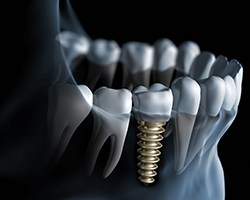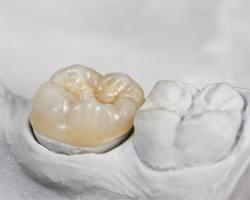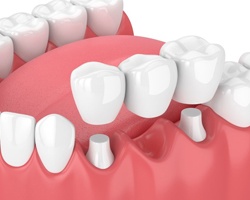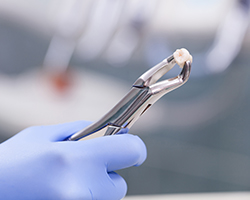Restorative Dentistry Rebuilds Broken Smiles

Problems like chipped, cracked, broken, decayed, and missing teeth are all very common, even for people who take good care of their teeth! Fortunately for the residents of Weyauwega, these kinds of issues don’t have to spell trouble for your oral health or appearance thanks to Dr. William Twohig. Due to his 20 years of experience practicing holistic dentistry, he’ll be able to rebuild your damaged teeth in the most conservative and natural-looking way possible, making it seem like nothing bad ever happened to them. To start getting your complete smile back, contact us today for an appointment.
Dental Implants

Dental implants are the most complete missing tooth solution available today, as they are the only restoration that replaces both the root and the crown of a tooth. They can be used to bring back any number of teeth, and we can even design them to support a full denture. Compared to any other treatment, they provide the most reliable, durable, and beautiful results by far. And, with the proper maintenance, they can easily be expected to last for 30 years or more.
Learn More About Dental Implants
What is a Dental Crown?

A dental crown is a restorative dental device intended to cover broken, decayed or otherwise damaged teeth. Crowns are among the most common restorative solutions provided by our office because of how incredibly versatile they can be. Their uses include:
- Covering cracked or separated teeth
- Preventing teeth from further breaking apart
- Saving teeth which have sustained forced trauma
- Hiding permanent imperfections in healthy teeth (i.e. discoloration, chips)
- Restoring a dental implant
- Building a dental bridge
Overall, crowns are used when a dental filling is unable to sufficiently restore a tooth. They are cared for much like natural teeth and can last for at least 10 years before needing any sort of replacement. Our crowns are custom-made to not only seal your vulnerable tooth from oral bacteria, but blend in seamlessly with the rest of your smile.
Learn More About Dental Crowns
What is a Dental Bridge?

Dental bridges are the first option to consider when replacing teeth. After a tooth is extracted, neighboring teeth will quickly begin to shift into the open space as a way to compensate. To prevent this, dental bridges can effectively fill that space with a crown on either side (both of which are anchored by altered neighboring teeth) and a series of false teeth that fill the gap, or pontics.
Dental bridges are able to replace one to two teeth at a time and can also be retained with dental implants for a stronger foundation. On average, they last between 10 and 15 years when properly maintained.
Learn More About Dental Bridges
Tooth-Colored Fillings

Tooth-colored fillings allow us to do two very important things that are impossible with traditional amalgam ones. One, repair small cavities without affecting the appearance of a tooth, and two, protect you from mercury exposure. Tooth-colored fillings are made of a composite resin, which is a non-toxic material that can also be specially shaded to perfectly match a patient’s tooth color. It is a more conservative treatment that also yields better looking and longer lasting results.
Learn More About Tooth-Colored Fillings
Full & Partial Dentures
Dentures can provide a reliable solution for those who are suffering from significant tooth loss. Thanks to the latest advancements in dental prosthetics, modern-day dentures are now smaller, sleeker, and more comfortable than ever. Partial dentures can fill in the gaps left by missing teeth while fitting in comfortably with the remaining ones (like the piece of a puzzle), while full dentures can restore an entire row of missing teeth.
Learn More Dentures and Partials
Tooth Extractions

While our number one goal is to help our patients preserve all of their natural teeth for as long as possible, sometimes, the best thing we can do to protect someone’s oral and overall health is to remove one. This is often the case if:
- A tooth is too damaged to be restored
- Gum disease has damaged the bone supporting a tooth
- Room needs to be created for a denture/orthodontic treatment
- The wisdom teeth have become painful, impacted (stuck), or infected.
Learn More About Tooth Extractions
Cavitation Surgery

A cavitation is actually a hole that is created in a bone due to infection. They can sometimes form in the area where a tooth has been extracted, which can lead to a litany of unpleasant symptoms that affect much more than the mouth. Fortunately, Dr. Twohig knows exactly how to eliminate cavitations in order to relieve any associated discomfort.
